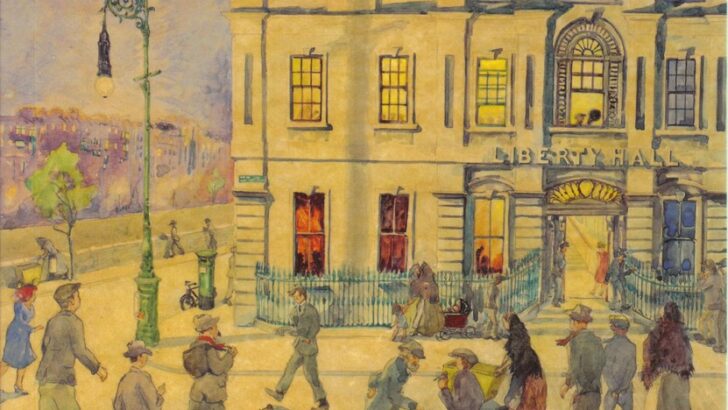This year marks the centenary of ‘Fund for the National Collections of Ireland’, which may well be for many readers a little known organisation. But nevertheless it is an important body working for the preservation of the arts in Ireland and the records of the past.
Recently Dr John Turpin outlined the history of the Fund in a speech opening an exhibition of a selection of items it has presented to the Irish Architectural Archive, in Merrion Square Dublin, since 1981, which are now on display.
“The Fund for the National Collections of Ireland,” he explained, “was founded a century ago in 1924 by the painter Sarah Purser and other art lovers. Its aims, which remain unchanged, were to acquire and present works of art and objects of historical importance to the public galleries of Ireland, north and south.
“At a time of economic difficulty at the foundation of the new state, with few resources available for the arts, the FNCI stepped in. Initially we concentrated on assisting the Dublin Municipal Gallery where we sought to continue the work of Hugh Lane in acquiring modern continental art and promoting the case for the return of the disputed Lane collection of continental paintings to Ireland.
“Also from the 1920s we began to assist the National Gallery, the National Museum, the National Library and the Ulster Museum by presenting work.
“After the Second World War, as the regional galleries began to develop, the Fund focused increasingly on helping them to build up their collections of Irish art. The Crawford in Cork benefited, as did the art galleries in Sligo, Limerick, Waterford and Drogheda among others, including the Irish Architectural Archive.”
The first gift of the Fund to the IAA, for instance, was in 1981 when they presented four Dublin sketches by Raymond McGrath. Though the captions in the current exhibition does not say so, these sketches are associated in my mind with a project that McGrath had with Penguin Books in the early 1950s to write and illustrate a King Penguin on Dublin, to match one already in print on The Isle of Wight by Barbara Jones and John Piper on Romney Marsh.
Among the many other items over the years is the design prepared for a stained glass window by Christopher Campbell, which is very affecting (above).
Dr Turpin also remarked that “Looking at the range of items that we have presented, now going on public view here in the IAA, we can see a great diversity of subjects from designs for houses great and small to commercial premises, town plans… These drawings are now part of the resources of the IAA available to scholars and all interested people. As someone who has used the Archive in my own researches in the history of Irish art I know what a treasure it is.”
In the course of his remarks Dr Turpin also paid a well deserved tribute to the late Dr John Gilmartin, the former chairman of the Fund. He will be a familiar memory to many as a genial man of culture, artistic taste, and effective tradition – especially in matters relating to his Catholic faith, as this reviewer recalls.
Dr Gilmartin endowed the John Maiben Gilmartin Award at the Irish Georgian Society, worth €5,000 annually. It is “to support research into the history of Irish art, architecture and designed landscapes and of the culture and society of Ireland of the long 18th Century”.
The exhibitions in Dublin are only a part of a series of shows across the country, and even in Belfast over the rest of the year. There is room here to note only few; but all find be found online at the Fund’s website (honsecretary@fnci.ie or postal address FNCI, PO Box 11481, Ballsbridge, Dublin 4, Ireland).
Of special interest are the five institutions in Waterford and Cork; but there are also exhibitions in Limerick, Drogheda, Sligo, Kilkenny and Tipperary town. Crossing the border to ‘another jurisdiction’ there is also a related show at the Ulster Museum in Belfast’s Botanic Gardens.
And I should also add that the FNCI through its membership has also a well developed social side which will appeal to many.


 Peter Costello
Peter Costello
